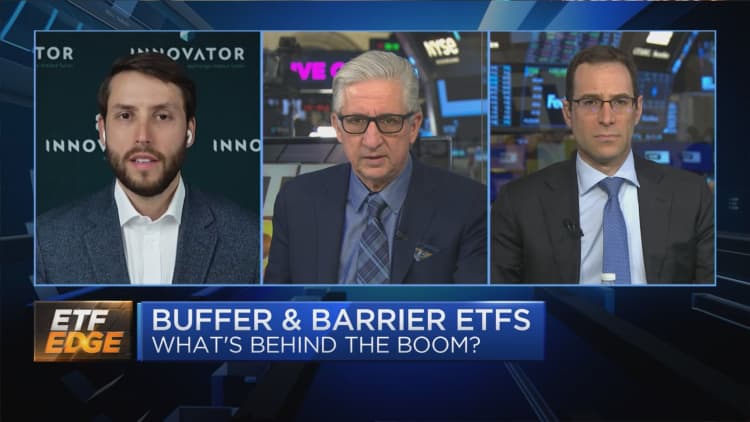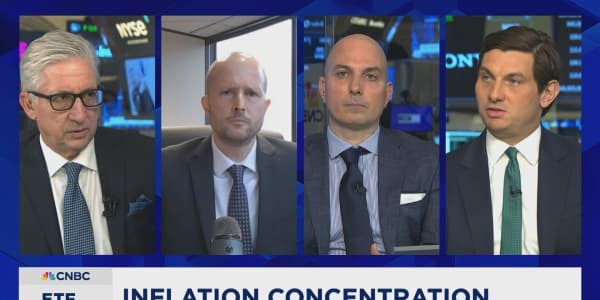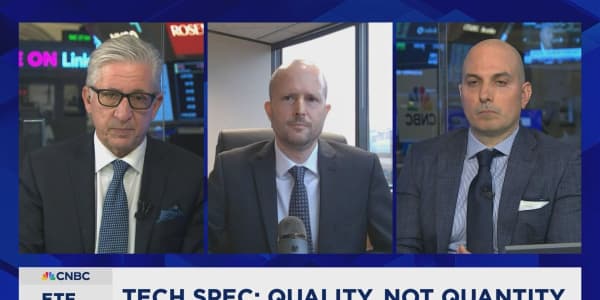
Safeguarding against downside risks remains an evergreen strategy for investors this year, with ETFs that offer a "buffer" becoming increasingly in demand.
Buffer ETFs, which are encompassed by defined outcome funds, offer participation in stocks or bonds while maintaining a level of downside protection — protection usually paid for by a cap level on potential upsides.
"With equities and bonds dropping in 2022, it's all about risk management today," Graham Day, SVP and chief investment officer at Innovator ETFs, told Bob Pisani on CNBC's "ETF Edge" on Monday.
"You're trading unlimited upside in exchange for a known level of built-in buffers against loss," he said.
One of Innovator's products, the Equity Power Buffer (PNOV), uses options to track the return of the SPDR S&P 500 ETF Trust (SPY) and provides a downside buffer against the first 15% of losses. It has a starting cap of 20.51% and is rebalanced annually.
For investors easing into the defined outcome ETF space, Day said, the Innovator Defined Wealth Shield ETF (BALT) is the more conservative strategy. The product provides a 20% buffer every three months against equity markets with upside potential attached.
"Every time the market has corrected the 20% buffer, BALT has really guarded investors against losses," Day said. "And when the market has had some upside recovery, investors have been able to participate in those gains."
While these products traditionally perform best in down or sideways market environments, Todd Sohn, ETF and technical strategist at Strategas Securities, warned that there are drawbacks to the funds should the trading landscape shift.
"There's risks with any investment," Sohn said Monday. "If the market were to go on a tear here, you're going to lose out on the upside."
But to counter those concerns, Sohn explained, market volatility in recent years has created an environment tailored for buffer ETFs to prevail.
"We had a 20% correction for Q2 2018; we had the Covid crash. And then we had last year, where we were down some 20% at one point," he said. "If you're close to retirement [or] if you're a novice investor who may be scared of getting into the markets given what's going on these last few years, these are a decent starting point."
According to Innovator ETFs, the number of defined outcome products has significantly increased, to 158 funds in the last couple of years, and they have become more attractive to major issuers. The JPMorgan Equity Premium Income ETF (JEPI) has grown to over $21 billion in assets since launching in 2020, and BlackRock has filed for two similar defined-outcome ETFs.
"You can make the case that this is the new innovation," Sohn said. "A few years ago, everyone followed Cathie Wood and her team. Now you're seeing options-related strategies to get that income through the equity market."





